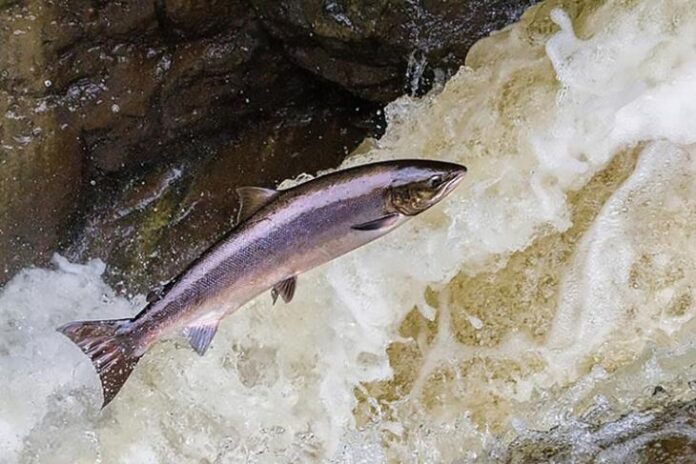Are the strong returns of wild salmon to BC waters due to the shutdown of salmon farms? Not really. It’s the cooler conditions, says Canada’s fisheries agency.
Wild salmon advocates are rightly cheering the strong returns of wild salmon. Sockeye has particularly been observed returning in robust numbers in the Broughton Archipelago region this week, leading some wild salmon advocates to imply that the shutdown of the salmon farms in the area is behind it.
Mowi Canada West and Cermaq Canada were owners of the 17 salmon farms in the Broughton Archipelago that were ordered shut down in December 2018. Those farms were to be decommissioned between 2019 and 2023.
This summer’s strong return of wild sockeye salmon comes two years after the closure of two farms in the area.
“We had targeted those farms,” Bob Chamberlin, chairman of the Indigenous-led FirstNations Wild Salmon Alliance, told Vancouver Island news outlet CTV. “We got them removed and two years later we went from 200 fish in the river to where we have several thousand to date. In our mind and knowledge that is a really clear indicator.”
But could this be a case of “you-see-what-you-want-to-see” bias?
SalmonBusiness reached out to Fisheries and Oceans Canada to ask for numbers to support the claim.
“We will not have final return data available until December. The salmon runs will continue until October. Data will be collected, validated and then published,” Fisheries and Oceans Canada spokesperson Lara Sloan told SalmonBusiness.
DFO Science
However, Sloan shared DFO’s scientific explanation behind the robust salmon returns in 2022. The bottom line: it’s the cooler conditions.
“Sockeye returning to spawn in 2022 entered the ocean during the tail end of a marine heatwave and have experienced cooler conditions associated with a La Nina beginning in the latter half of 2020, which prevented extremely warm ocean temperatures from developing. Cooler conditions are generally more favourable for food sources and growth and survival of salmon at sea. Three consecutive years of La Nina conditions are favourable to most salmon populations.”
She added that there are 9,600 different salmon stocks in Canada’s Pacific Region.
The stock that’s being witnessed as returning more abundantly is sockeye, said Sloan. DFO estimates that 4.3 million sockeye will return this year based on the returns seen so far in the test fishing area.
“The largest sockeye run is to the Fraser River, which is due to begin in the next few weeks. But environmental conditions in-river as they complete their migration to their natal streams and lakes will impact how many actually make it to spawning grounds,” she added.
Debunking other activists’ claim
In November 2021, the BC Salmon Farmers Association debunked claims by activists that the removal of 19 farms in the Discovery Islands region of British Columbia significantly reduced sea lice in the area.
“Five years of independent sea lice monitoring shows that sea lice levels in the Discovery Islands remained low – both prior to and after the December 2020 decommissioning decision in the Discovery Islands, which saw the removal of 19 farms from the region,” said Brian Kingzett, Science and Policy Director for the BC Salmon Farmers Association.
“Sea lice levels have been low with most out-migrating salmon not infected by sea lice. Additionally, we did not see sea lice levels change after decreased production of salmon farming in the region,” he said.


